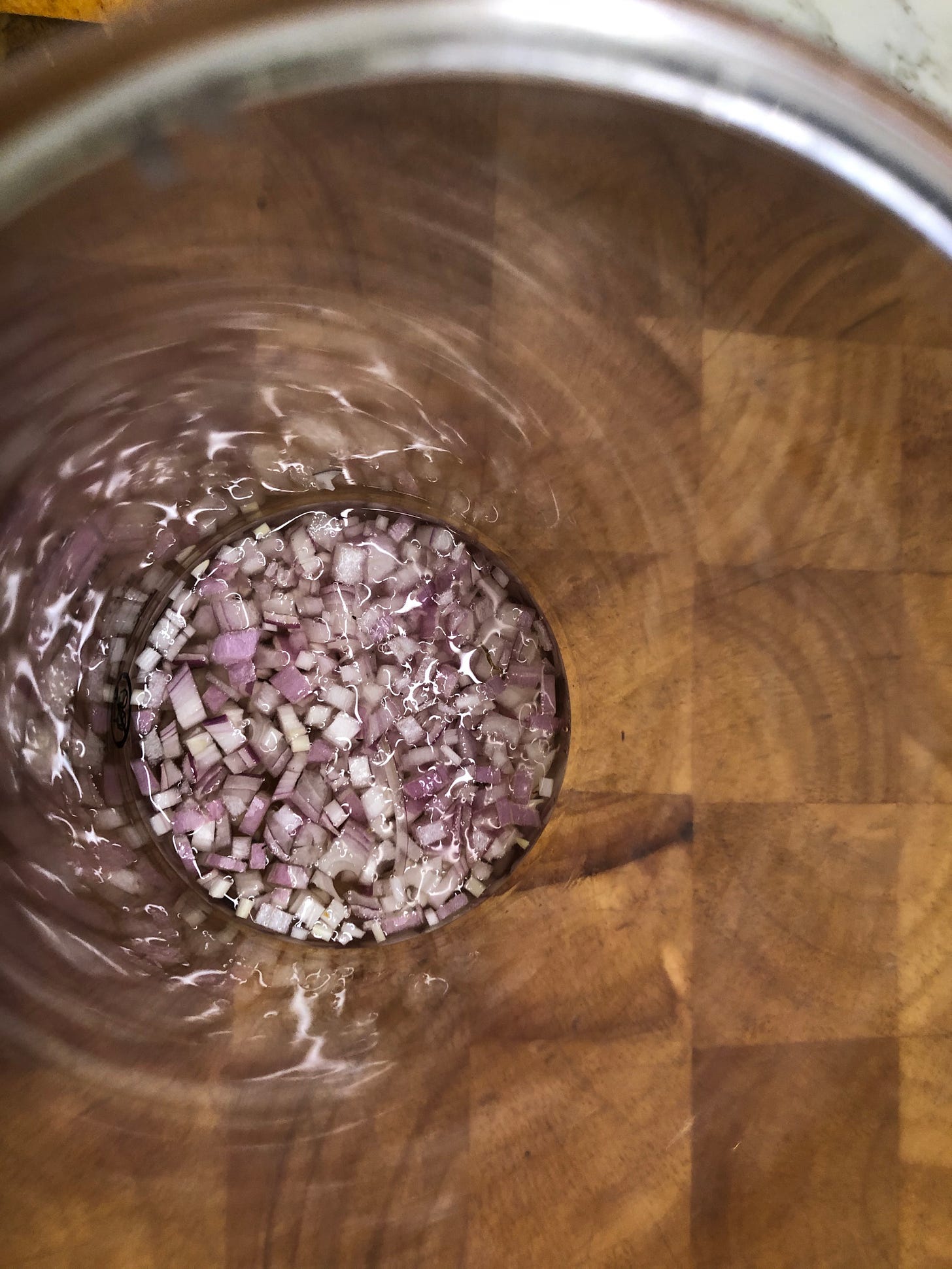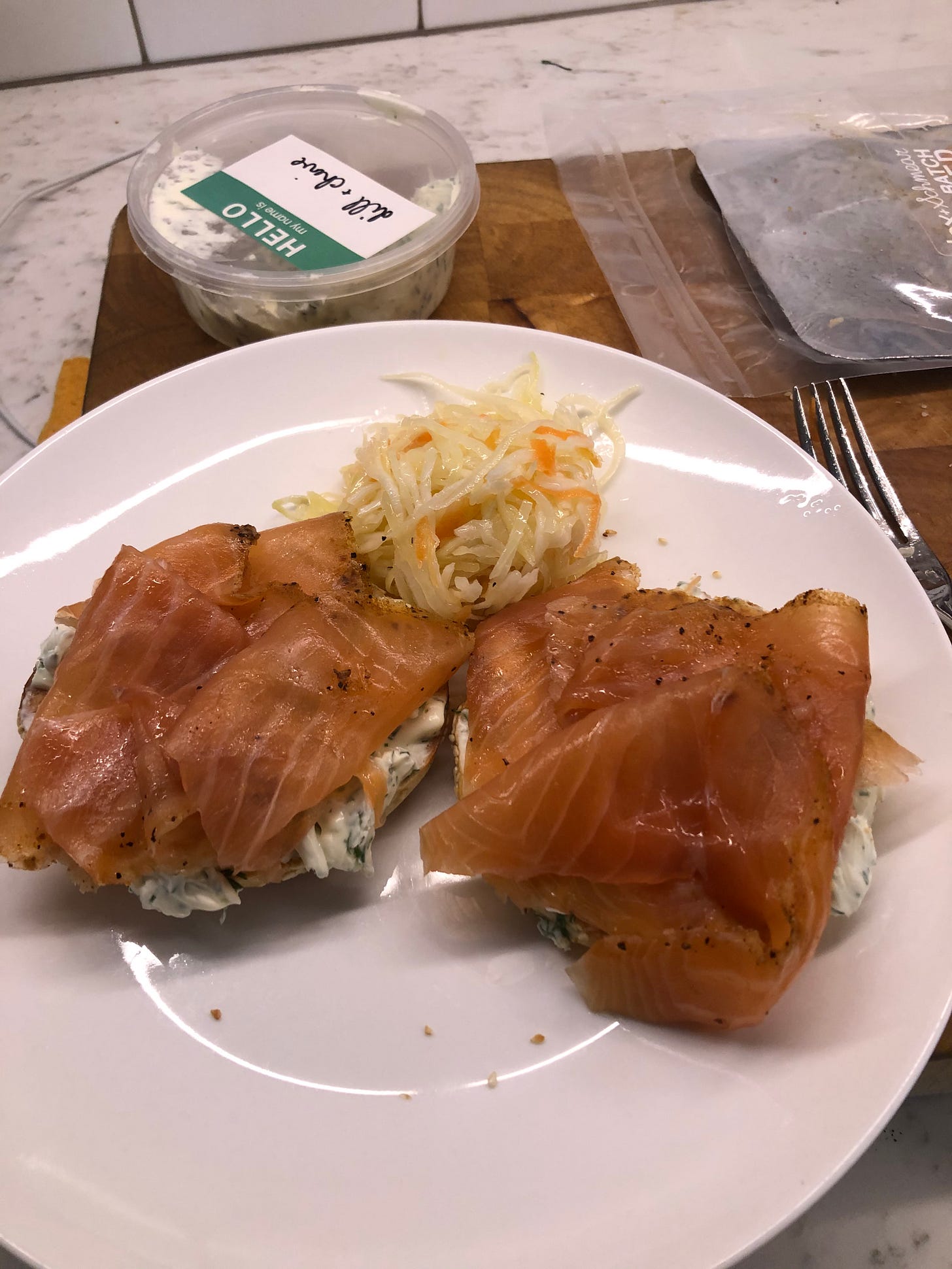7: Come Together
How to create unity
It isn’t just possible; it’s achievable today. It’s possible to join two things that are completely repulsed by each other. It’s time—
Wait. You didn’t think I was talking about *that* unity did you? Because screw that. You can’t suddenly call for unity after decades of trying to divide people. You made your intolerant, hateful bed, now lay in it. Take the personal responsibility you’re always telling other people to take.
No, I was talking about uniting oil and water, or vinegar, which is mostly water. Most vinaigrette recipes have you add a dab of some kind of emulsifier like mustard to bind to both the oil and water molecules, preventing them from separating, which is what they naturally want to do. And it works. For a time. If you only make enough dressing for your current salad, it’ll be fine. But if you want to save time and make a larger batch of dressing, it will probably have separated by the time your next salad rolls around and you’ll need to re-whisk it.
Or you could just use an immersion blender, which will whip it into a very stable and much creamier emulsion than you could achieve by whisking or using a dressing shaker like this one. It’s more stable because the blades of the blender disperse the oil more thoroughly. It’s creamier because more air is incorporated by the blender. (Put a can of tomatoes in a blender and watch as they turn from red to orange as air is beaten into them.)
Here’s everything you’ll need:

Pour, say, 50 ml of vinegar into the container. I used rice vinegar here because I wanted a fairly light flavour for a riff on the radish and herb salad I was making. The shallot I had was enormous, so I minced half of it and added it to the vinegar.
And that was followed by a dollop (probably around a teaspoon and a half) of mustard. A smoother one like Dijon works well. Very grainy ones like Kolzik’s Triple Crunch probably won’t hold the emulsion together as well. Yellow mustard has its time and place, but this isn’t it, weirdo.
Season with salt and pepper.
Then add your oil. We used 50 ml of vinegar, so I’d start with 100 ml of oil. I favour quite tart dressings, though, so you may want to go closer to the classic ratio of 3:1 and add up to 150 ml. I’ve been using this Tunisian olive oil for the last year or so. I find it more affordable than Italian oils of comparable (i.e., good but not extravagantly good) quality and, in an industry that has a problem with fraud, I like its traceability.
Once you’ve added the oil, insert the stick blender and let everything sit for a minute or so to let the oil and vinegar separate.
(I’ve adapted this method from Kenji Lopez-Alt’s recipe for two-minute mayonnaise, which is simply the easiest way to emulsify egg, lemon juice, and oil. It takes slightly longer than opening a jar and the results are infinitely better. )
Keeping the head of the blender against the bottom of the container, turn it on. If you have variable speeds, somewhere between medium and high is good.
It will quickly turn opaque and creamy, but it won’t completely emulsify at first. Hold down the container and start slowly lifting the blender up. That should incorporate the last drops of oil and make a giant, gasping sucking sound.There is no video of this because it’s a two-handed job and I didn’t think ahead enough to get the tripod.
What results is a like nothing you could achieve manually. You could probably do this in even larger batches in a blender, but who wants to haul out and wash the damn blender?
And, I said earlier, it’s an emulsion that will hold up. Below is a dressing I made with sherry vinegar four or five days earlier. A little oil has broken free, but a a stir or two will blend it back in.
This is, of course, a very basic dressing. Anchovies would be a great addition. Fresh herbs. Lemon juice to replace some or all of the vinegar, although the flavour won’t hold up as well if you’re storing it. Lemon zest. Garlic. Chives. You get the picture.
What I’m consuming…
St. Urbain bagels and house-smoked pastrami lox from Lox + Schmear. Lev Levine’s fish is terrific and they always remember my order, even when I haven’t been in for months.
When I am in charge of all food media (I almost wrote, “When I seize power of all food media…” but this doesn’t seem like the time for that.) I will insist on this: if you write a recipe that calls for something that may be unusual for your readers like, say, jicama, and your recipe only uses half of the jicama, you must provide suggestions for how to use the rest. I used our remaining half-jicama as a substitute for the crunch of radishes when I made the radish-and-herb salad mentioned above for a second time.
What’s on the menu…
We’ve been trying to get our pantry under control, as it currently contains every single type of bean and lentil that exists. It’s a Soup Swap, so I’m turning our black beans into a great food memory for me: the black bean soup from The Columbia Restaurant in Ybor City, Tampa.
Some amazing pickled carrots from Fat Pasha that I’m going to try to recreate this week.
A roast chicken, which is a teaser for another issue of The Plate Cleaner that’s coming soon.










Good....o
Love this. Would avocado or honey perform the emulsifier role as well as mustard? I'm regularly making an onion basil dressing and the mustard might be odd...